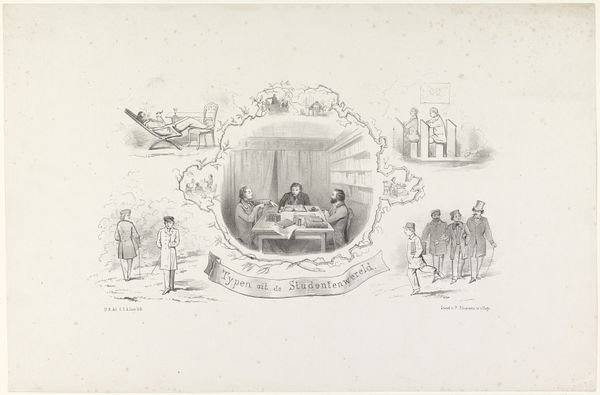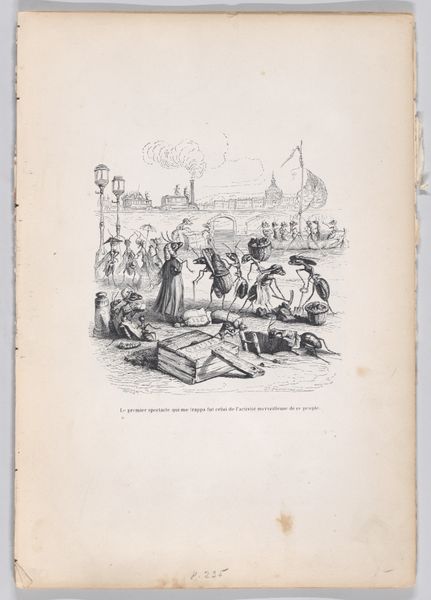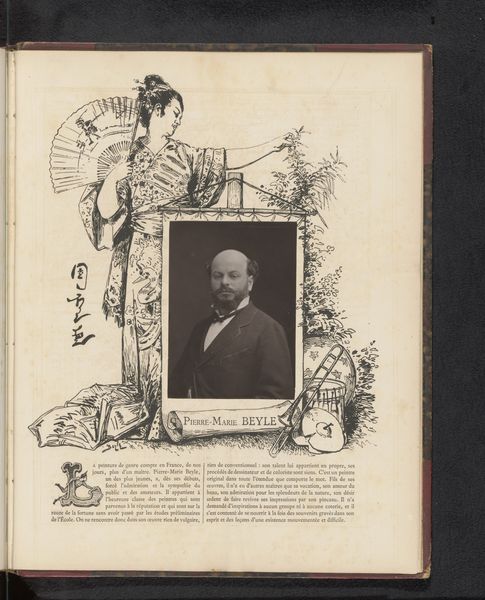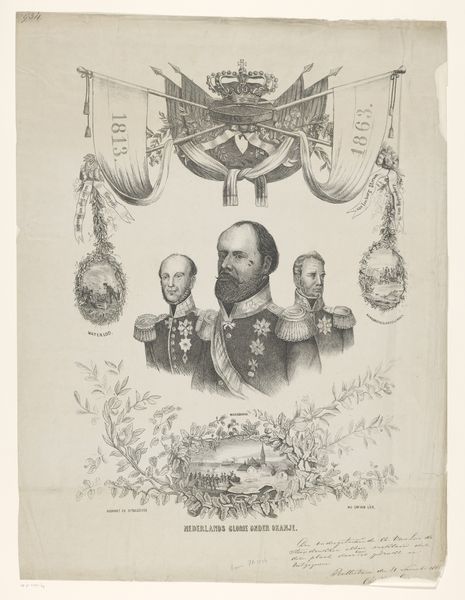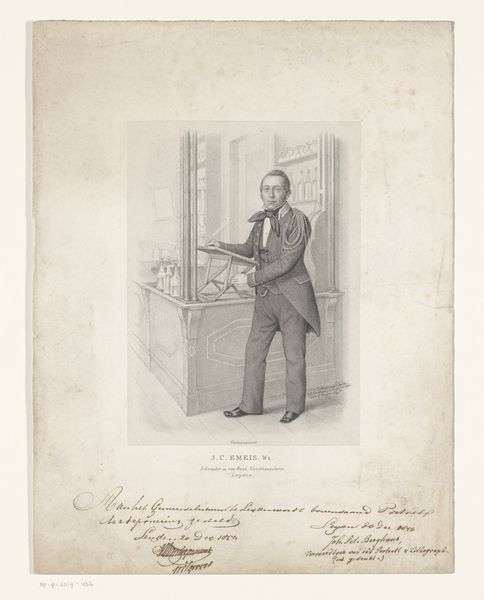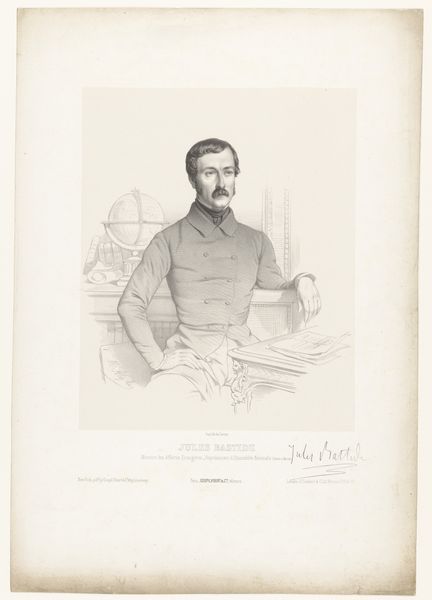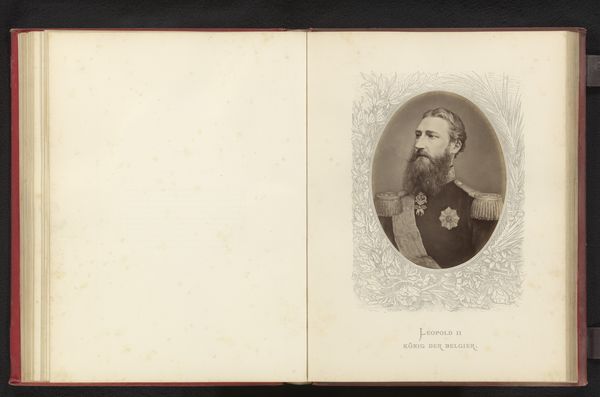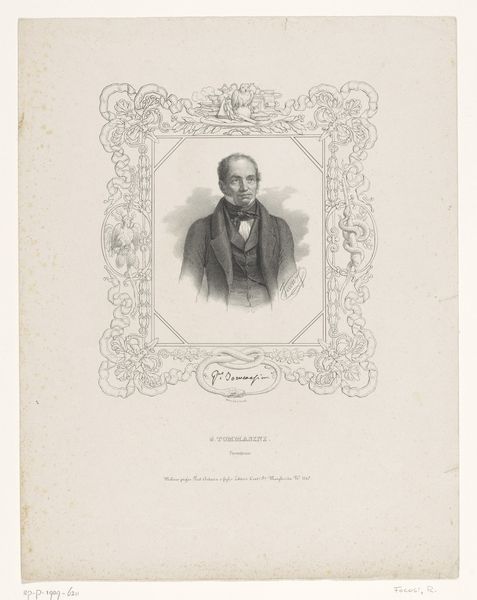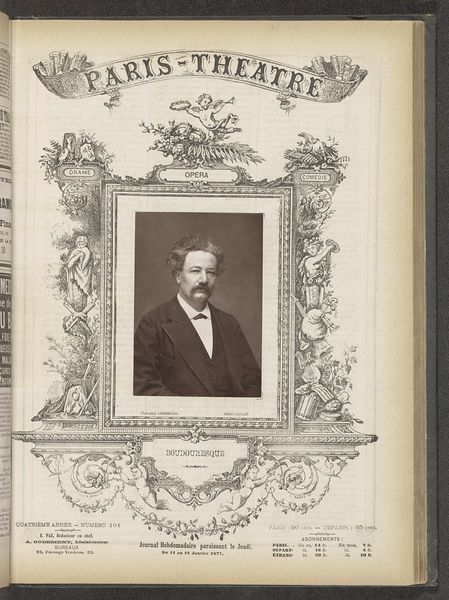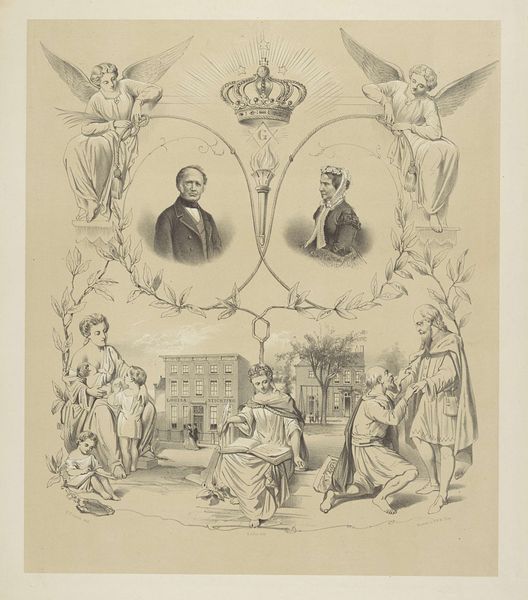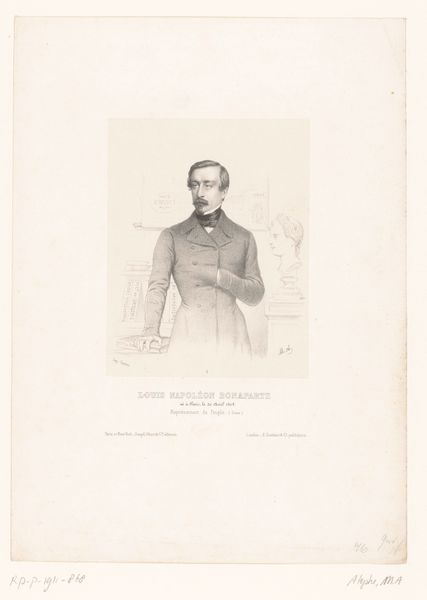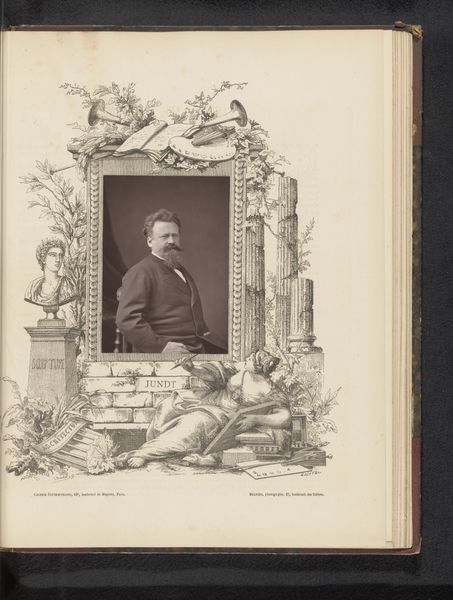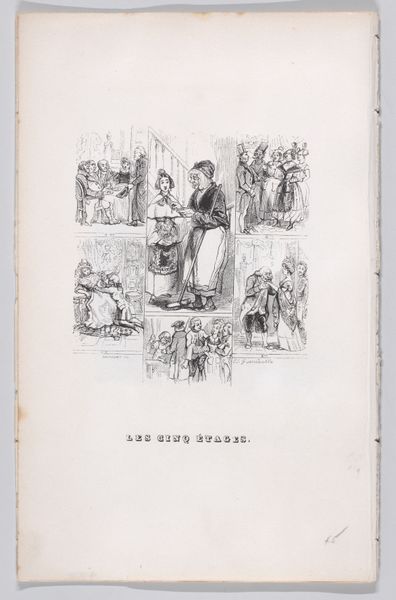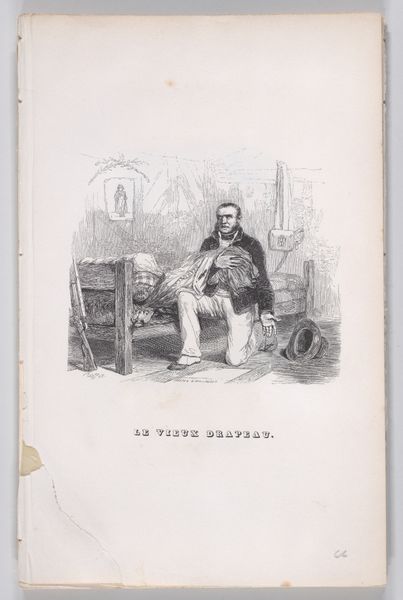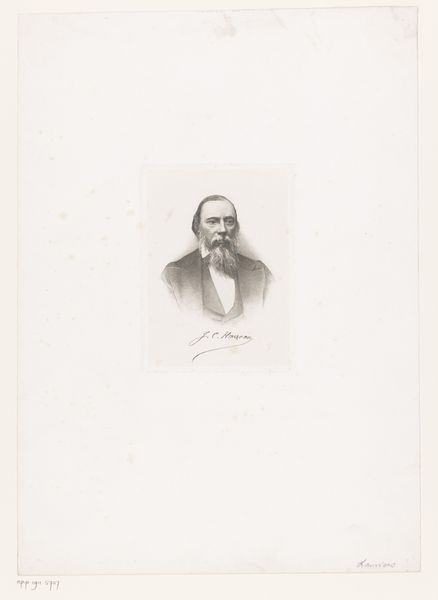
print, engraving, architecture
#
portrait
# print
#
etching
#
cityscape
#
history-painting
#
engraving
#
architecture
Dimensions: 340 mm (height) x 258 mm (width) (plademaal)
Curator: Let’s delve into this detailed print, dating from between 1834 and 1866. Titled "Georg Carstensen," it’s held here at the SMK, Statens Museum for Kunst. It's attributed to Sophus Schack. Editor: It's immediately striking. There’s a dense quality, an almost overwhelming amount of detail packed into a relatively small space. It makes me think about labor and time investment in this mode of reproduction. Curator: Absolutely. Schack has crafted this using engraving and etching techniques, styles so often used to reproduce paintings for a wider, bourgeois, audience, connecting directly to new means of production in Denmark’s early industrial period. The cityscape views add to its impact on the historical context and narrative. It feels both celebratory and representational of the time and identity. Editor: What exactly is it celebrating though? We see Carstensen's portrait, centered, and then what look like scenes surrounding it. Buildings, parks, architecture... Curator: Precisely. Carstensen was a pivotal figure—the founder of Tivoli Gardens in Copenhagen. This print essentially commemorates his vision. We have miniature views of various buildings and landscapes, acting as metonymic signifiers that contextualize Carstensen's contributions. This encapsulates the socio-political backdrop. Consider the importance of public spaces and entertainments, their role in shaping the social consciousness in the burgeoning cosmopolitanism of mid-19th-century Copenhagen. Editor: So it's about celebrating the construction of leisure. This engraving method democratized visual access but the content reinforces power structures. Curator: The very materiality speaks to wider audiences, indeed. It suggests new relations between leisure, urban development, and social stratification. By immortalizing his architectural works, it speaks to the value and material transformation during this period, reflecting larger societal trends about place and history painting and how those intersect. Editor: Examining the materials and Schack's process has given a lens to focus our vision, reflecting Carstensen’s transformation of leisure. Curator: Precisely, looking through a socio-political scope sheds light not only on the artwork, but on Denmark during this moment.
Comments
No comments
Be the first to comment and join the conversation on the ultimate creative platform.
